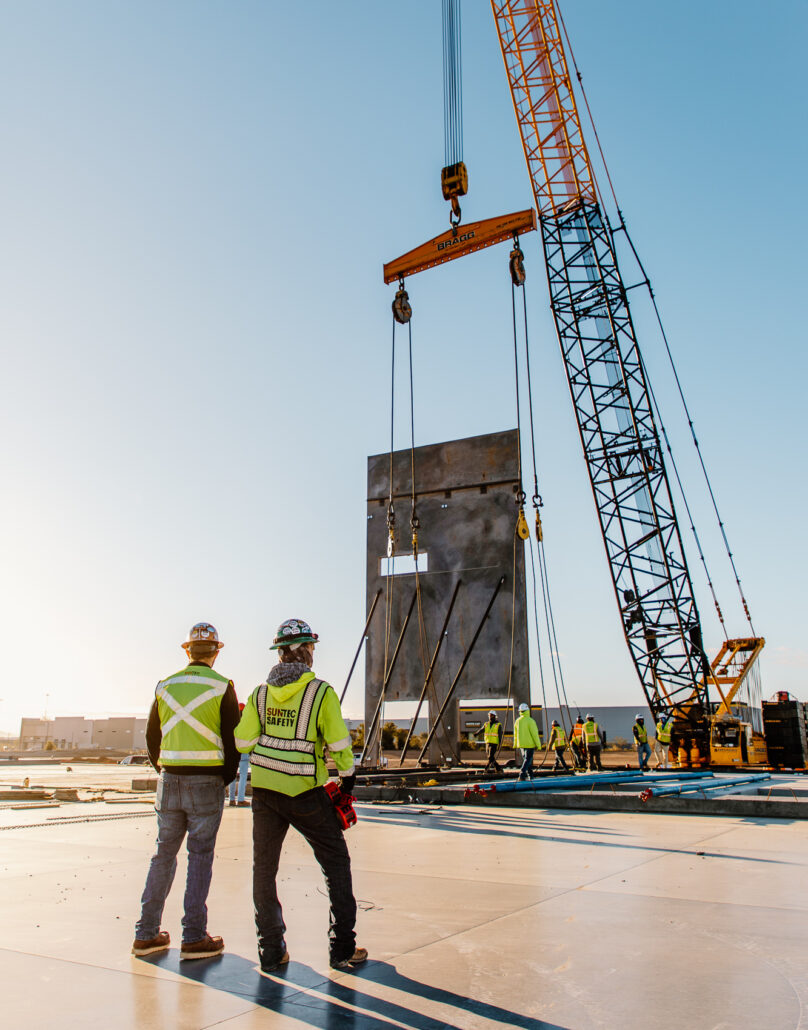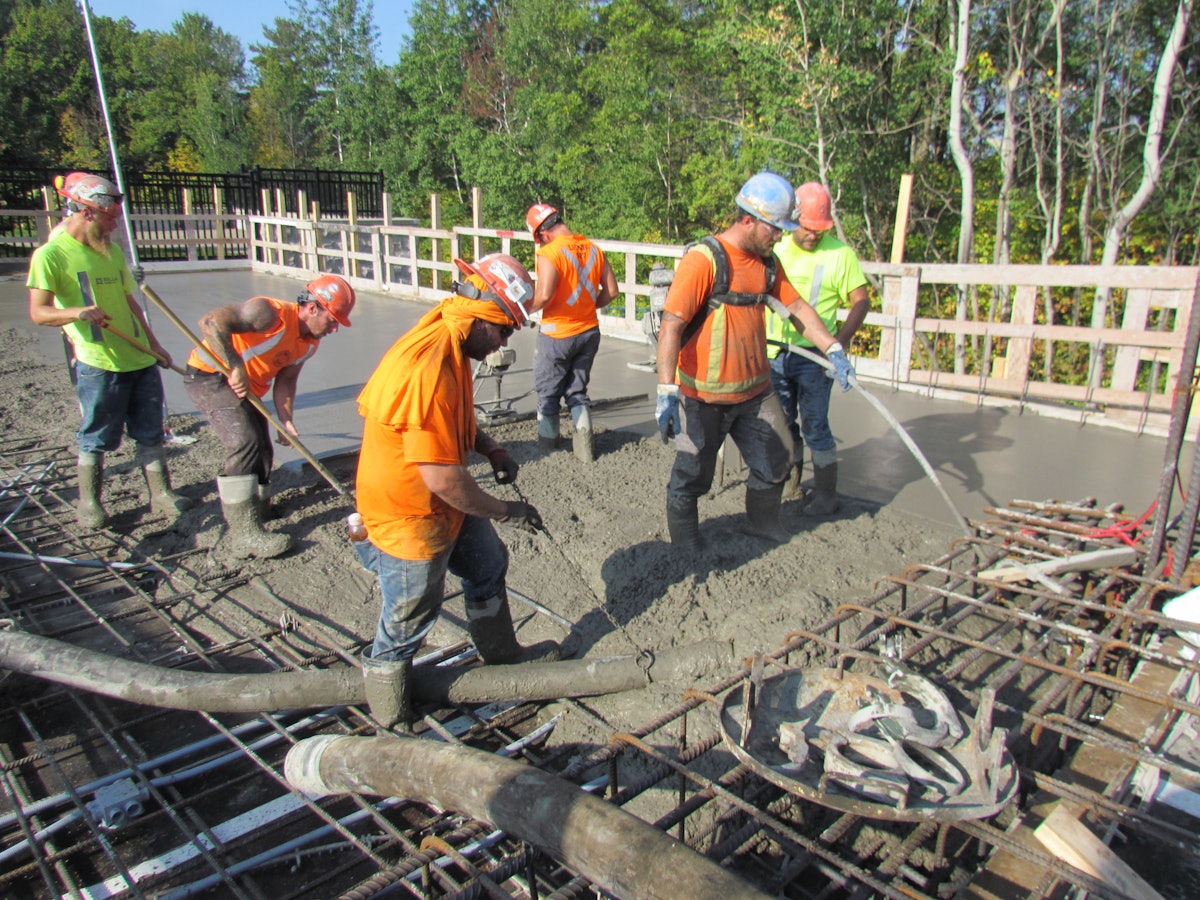How to Choose the Right Mix for Durability with West Coast General Engineering Concrete
How to Choose the Right Mix for Durability with West Coast General Engineering Concrete
Blog Article
The Necessary Function of Concrete Structure in Structural Stability and Long Life
When it concerns developing a home, the structure is much more essential than you could think. Concrete foundations give unrivaled stamina and resilience, guaranteeing your structure can hold up against numerous ecological obstacles. Without a strong base, you take the chance of potential issues like changing or breaking, which can jeopardize security and value. Understanding the nuances of concrete structures could be the key to protecting your investment for many years to find. What should you consider next?
Recognizing the Value of Concrete Foundations
Concrete foundations are crucial to the total security of any framework, as they give the crucial assistance needed to stand up to numerous tons and ecological problems. When you think of constructing a home or a commercial area, the foundation is the very first thing you need to take into consideration. It functions as a barrier versus dampness, securing your home from water damages. A well-placed concrete foundation additionally protects against settling and changing, which can bring about cracks in walls and floorings. You'll desire to guarantee that the structure is appropriately made and strengthened, as this affects the long life of your structure. Furthermore, a solid structure can enhance energy effectiveness by reducing air leaks. Keep in mind, ignoring the importance of a concrete structure can bring about costly repairs down the line. So, purchasing a quality structure upfront is necessary for the integrity and durability of your framework.
Advantages of Concrete Foundations for Structural Honesty
While many aspects add to a building's architectural honesty, concrete foundations offer unequaled sturdiness and toughness. You'll value that concrete can stand up to severe weather condition problems, withstanding both dampness and temperature level variations. This strength suggests your framework is less likely to experience cracking or changing in time, which can endanger its safety.Additionally, concrete's intrinsic weight supplies a solid base, protecting against movement during natural occasions like quakes or floods. When you choose a concrete structure, you're also choosing low upkeep; unlike wood, it will not rot or attract insects, saving you time and money in repairs.Moreover, concrete's fire resistance offers added security, ensuring your framework can endure heats without significant damage. In general, purchasing a concrete structure indicates you're focusing on the long-lasting stability and stability of your structure, making it a smart selection for any kind of building job.
Typical Kinds Of Concrete Foundations
When it pertains to building foundations, understanding the usual sorts of concrete foundations can help you make informed options for your job. The most widespread kinds include slab-on-grade, crawl room, and complete basement foundations.A slab-on-grade foundation is a basic, affordable option, where a thick concrete slab is put directly on the ground. This type functions well in warm climates, as it reduces warmth loss.Crawl room structures boost the home slightly above ground, enabling air flow and access to plumbing and electrical systems. This layout can assist protect against wetness issues.Full basement structures use added living or storage area while giving outstanding structural support. They need even more excavation and are generally used in chillier environments to stop frost heave.
Elements to Take Into Consideration When Designing a Concrete Structure

Finest Practices for Installing Concrete Foundations
When you're mounting a concrete foundation, correct website prep work is important to ensure stability (West Coast General Engineering Concrete). You'll likewise need to understand support methods to improve toughness and durability. Lastly, don't overlook the healing procedure, as it plays an essential duty in attaining a strong foundation
Website Preparation Relevance
Although it may appear simple, appropriate site prep work is essential for ensuring a solid and resilient concrete foundation. Begin by getting rid of the area of any kind of particles, plants, or natural material that might jeopardize the foundation's stability. Next off, evaluate the soil type and compaction; you could need to excavate or include products to create a stable base. Degree the ground to ensure even weight circulation and prevent settling problems later. Setting up proper drainage systems is additionally vital to prevent water accumulation, which can deteriorate the structure with time. Ultimately, mark out the foundation's measurements accurately to guide the pouring procedure. By following these actions, you'll set the phase for an effective concrete foundation that stands the test of time.
Reinforcement Strategies Described
Once the site is correctly prepared, the following step in assuring a sturdy concrete foundation includes implementing reliable support techniques. You ought to start by utilizing steel rebar, which gives tensile stamina and helps protect against cracking. Lay the rebar in a grid pattern, ensuring it's raised using spacers to preserve proper coverage. Additionally, click over here now think about utilizing wire mesh for additional support, particularly in locations subject to hefty lots. Don't neglect to link the rebar junctions securely with cable. For larger foundations, fiber support can boost sturdiness, minimizing the risk of shrinkage splits. Constantly follow regional building regulations and standards to ensure conformity. By applying these reinforcement techniques, you'll substantially increase your foundation's stamina and durability, laying a solid groundwork for your structure.
Healing Process Essentials
To ensure your concrete foundation remedies properly, it's essential to keep sufficient wetness and temperature problems quickly after putting. Start by covering the surface with a damp burlap or plastic bed linen to keep dampness. This maintains the concrete hydrated, protecting against cracks and making sure toughness. You should likewise monitor the temperature; suitable healing problems are in between 50 ° F and 90 ° F. If it's as well warm, haze the surface consistently to stop quick dissipation. For winter, think about making use of protecting coverings to keep warmth. Purpose for a healing duration of a minimum of 7 days, as this is crucial for ideal strength advancement. By adhering to these best methods, you'll boost see this page your structure's toughness and long life, making sure architectural integrity for years to find.
Upkeep of Concrete Structures for Long Life
To keep your concrete foundation solid and enduring, regular inspections are essential. You ought to likewise guarantee effective drain options remain in place to stop water damages. If you detect any fractures, resolving them promptly will conserve you from bigger problems down the line.

Regular Inspections and Assessments
While regular assessments and analyses may seem like a duty, they're essential for keeping the integrity of your concrete foundation. By routinely inspecting for fractures, changes, or signs of wear, you can capture possible concerns before they rise right into expensive repair services. Seek any water merging around the structure or unusual settling, as these can signify underlying problems. It's additionally smart to keep track of any modifications in your house's structure, like doors that stick or windows that don't open smoothly. Maintaining a record of your evaluations aids track changes over time, permitting aggressive maintenance. Ultimately, these analyses ensure your foundation continues to be secure, sustaining the long life and safety of your whole structure. Don't neglect this crucial element of homeownership!
Reliable Drainage Solutions
Routine evaluations can reveal problems like drain issues that could compromise your concrete foundation's security. To avoid water buildup, guarantee your seamless gutters and downspouts direct water away from the structure. Installing French drains pipes can successfully reroute surface and groundwater, lowering stress on your foundation wall surfaces. Additionally, grading the soil around your home aids assure that water flows away, instead than merging near your foundation.Consider utilizing sump pumps in locations prone to flooding, as they actively remove excess water. Routinely check for clogs in water my explanation drainage systems and clear them immediately. You'll safeguard your foundation's integrity and long life by taking these positive actions. Remember, efficient water drainage options are crucial for keeping a solid, long lasting concrete foundation.
Trigger Crack Repairs
When you observe fractures in your concrete structure, addressing them immediately is essential for keeping its longevity. Small fractures can quickly develop into larger problems, compromising the architectural honesty of your home. Frequently examine your foundation for signs of damage, such as straight or vertical cracks. If you spot any kind of, don't wait-- repair them immediately. You can utilize epoxy shots or concrete patching substances, which are reliable for securing cracks. Always adhere to the supplier's directions and take into consideration getting in touch with a professional for substantial damages. Keep in mind, prompt repair services not just improve your structure's resilience however also conserve you cash over time by preventing a lot more substantial fixings down the line. Keep proactive, and your structure will stay strong and safe.
Resolving Typical Concerns With Concrete Structures
Concrete foundations can encounter different problems gradually, making it essential to recognize and resolve them without delay. Among the most typical issues is fracturing, which can take place due to temperature level variations or clearing up dirt. If you observe fractures, it's vital to evaluate their size and depth; tiny splits can frequently be secured, while bigger ones may need professional evaluation.Water invasion is one more major problem. Excess moisture can cause mold development and architectural damage. Guarantee proper water drainage around your structure to alleviate this risk. Additionally, seek indications of moving or bowing walls, as this can show underlying concerns with your structure's stability.Regular examinations are fundamental to catch these issues early. If you spot any concerning indications, don't wait to get in touch with a foundation specialist. By remaining aggressive, you can maintain the integrity and durability of your concrete structure, ensuring your home remains risk-free and secure.
Regularly Asked Concerns
Just How Does Dirt Type Impact Concrete Foundation Performance?
Soil type greatly influences concrete structure efficiency. If you have actually got extensive clay, for instance, it can cause changing and breaking. Sandy soil might bring about resolving. Comprehending your dirt assists ensure a secure foundation.
Can Concrete Foundations Be Repaired if Damaged?
Yes, you can fix broken concrete foundations. Relying on the level of the damage, strategies like epoxy injection or slab jacking can bring back stability. It's finest to speak with a professional for effective services.
What Is the Regular Life-span of a Concrete Foundation?
A concrete foundation commonly lasts 30 to 100 years, depending on elements like dirt conditions, environment, and maintenance. You'll want to maintain an eye on it to assure it stays in good form throughout its life-span.
Exist Choice Materials to Concrete for Foundations?
Yes, there are alternatives to concrete for foundations, like steel, timber, or perhaps recycled materials. Each alternative has distinct benefits and drawbacks, so you should consider your job's particular demands when picking the best product.
Just How Does Climate Influence Concrete Foundation Durability?
Environment greatly affects concrete structure toughness (West Coast GE Concrete contractors). Severe temperature levels, wetness, and freeze-thaw cycles can damage the product, causing fractures and architectural concerns. You need to consider neighborhood environment problems when preparing your foundation to guarantee long-lasting performance
Report this page